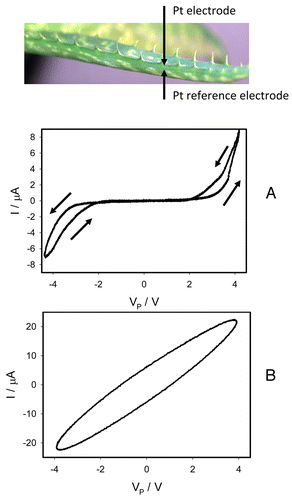Figures & data
Figure 2. Two methods of cyclic voltammetry: (Method A) Block diagram of the data acquisition and electrostimulation system; (Method B) The SI1287 Advanced Electrochemical Interface was connected via the GPIB to PC and used in 2 terminal configuration for cyclic voltammetry.
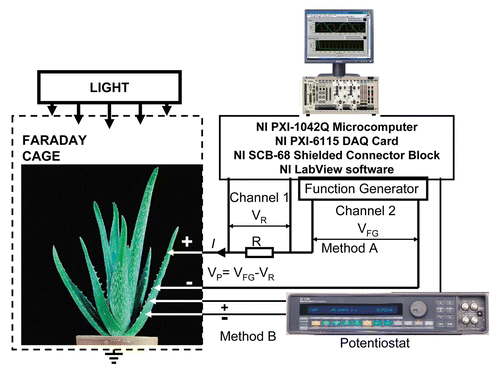
Figure 3. Electrical current I vs. voltage VP applied to a leaf of Aloe vera. Frequency of sinusoidal voltage scanning was 0.001 Hz (A) and 1000 Hz (B). Position of Pt electrodes in a leaf of Aloe vera is shown. These results were reproduced 14 times. The simplest equivalent electrical circuits are shown in inserts.
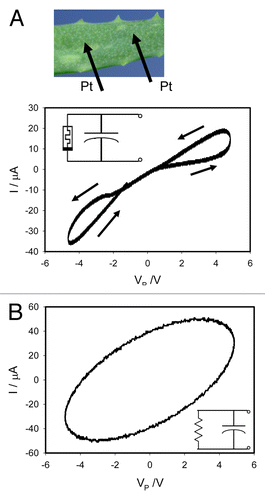
Figure 4. Electrical power P vs. time t estimated from . Frequency of sinusoidal voltage scanning was 0.001 Hz (A) and 1000 Hz (B). Position of Pt electrodes in a leaf of Aloe vera is shown.
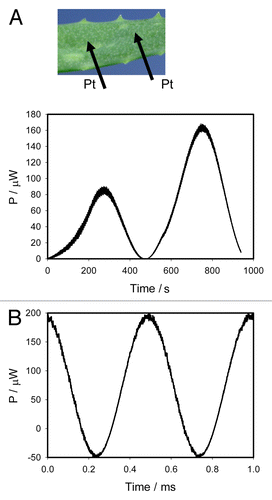
Figure 5. Electrical current I vs. voltage VP applied to a leaf of Aloe vera. Frequency of sinusoidal voltage scanning was 0.001 Hz (A) and 1000 Hz (B). Position of Pt electrodes in a leaf of Aloe vera is shown. These results were reproduced 14 times.
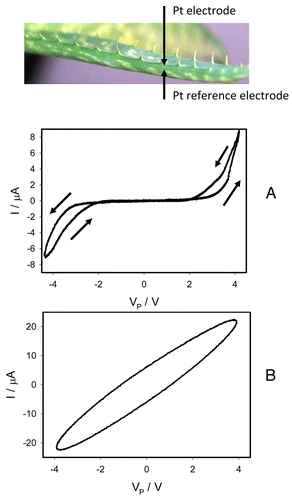
Figure 6. Cyclic voltammetry in a leaf of Aloe vera with a scanning rate of periodic triangle wave of 2 mV/s (A), 20 mV/s (B), 200 mV/s (C), and 1000 mV/s (D). Position of Pt electrodes in the Aloe vera is shown. These results were reproduced 14 times.
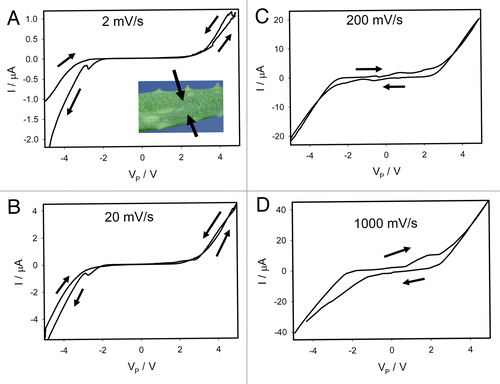
Figure 7. Electrical current I vs. voltage VP applied to a leaf of Aloe vera. Frequency of sinusoidal voltage scanning was 0.001 Hz (A) and 1000 Hz (B). 200 μL of 10 mM TEACl were injected by a syringe to the leaf 25 h before measurement. Position of Pt electrodes in a leaf of Aloe vera is shown. These results were reproduced 14 times.
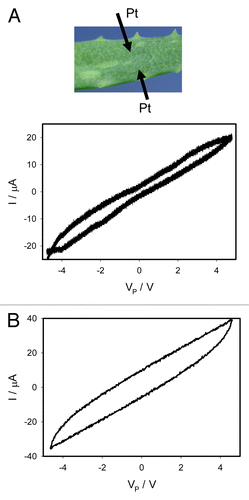
Figure 8. Electrical current I vs. voltage VP applied to a leaf of Aloe vera. Frequency of sinusoidal voltage scanning was 0.001 Hz (A) and 1000 Hz (B). Two-hundred μL of 10 μM FCCP were injected by a syringe to the leaf 25 h before measurement. Position of Pt electrodes in a leaf of Aloe vera is shown. These results were reproduced 14 times.
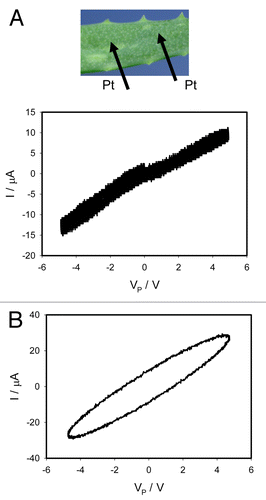
Figure 9. Electrical current I vs. voltage VP applied to a leaf of Aloe vera. 200 μL of 10 μM CCCP were injected by a syringe to the leaf 25 h before measurement. Frequency of sinusoidal voltage scanning was 0.001 Hz (A) and 1000 Hz (B). Position of Pt electrodes in a leaf of Aloe vera is shown. These results were reproduced 14 times.


